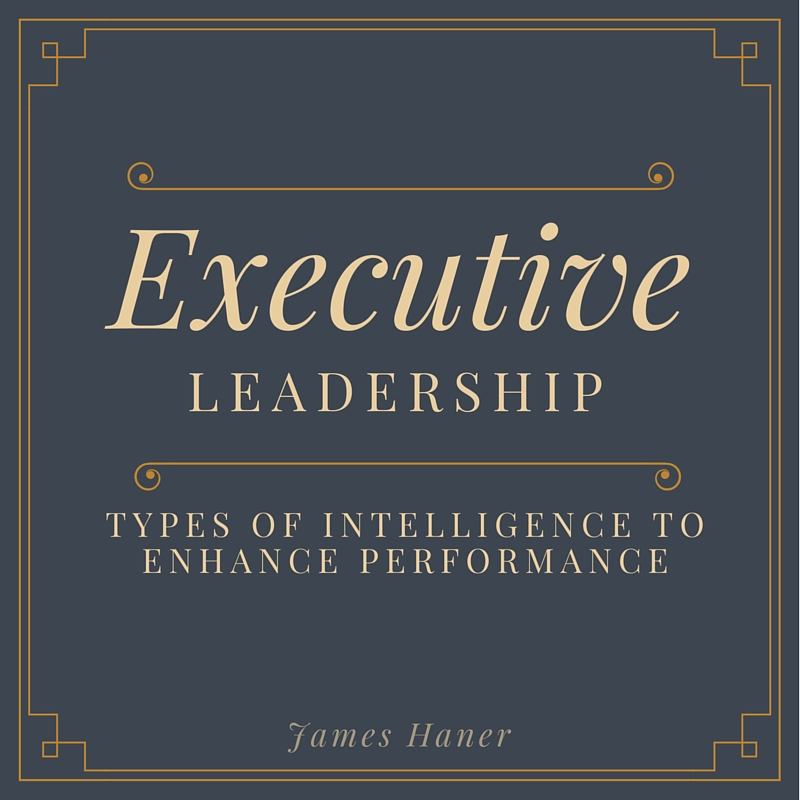Written by James L. Haner, a PMIWIC member
Executive intelligence is the ability to digest large amounts of information . . . to form important decisions that produce useful action.
Personality and style are overrated. Style without substance can be disastrous.
Too little credit is given to types of intelligence that enhance leadership performance:
- Cognitive ability tests (e.g., CogAT, LOFT)
- 10 times as powerful as personality assessments for predicting executive success
- Clear thinking
- Cutting through the noise to focus on the important core issues
- Applying appropriate logic and reasoning
One needs to be bright or sharp, but not necessarily highly educated.
Executive leaders absolutely need the help of others, but cannot abdicate to them. “Help me understand’ is a very powerful phrase for Executive Leaders, as having understanding is often more important than having facts.
One needs to know when they can afford the luxury of time, and how much time? How long to wait and setting the right priorities for actions? If one delays too much, the opportunity passes or the threat fully erupts; too hasty and the organization is distracted from other essential tasks that should been undertaken sooner.
Be careful of style over substance (empty suits), or as they say in Texas – ‘big hat, no cattle!’.
QUESTION: How do you see the difference between being “learned, educated or highly trained” and “cognitive ability and clear thinking?”
Executive leaders must be able to see the forest and the trees, and decipher the messages both are sending, and then, decide which messages are more important.
Adapted from Menkes, Justin. Executive Intelligence: What All Great Leaders Have. HarperBusiness, 2005.
Jim Collins, in his book Good to Great: Why Some Companies Make the Leap…and Others Don’t1
He recognized the concept of “legislative leadership.” This includes their ability to create coalitions both within and outside of organizations and to build power and influence.
That is then only used to accomplish the organization’s mission, goals, and vision.
1HarperBusiness, 2001.
Does this really apply only to not-for-profits?
Guess what – in all of our organizations, our team is a team that consists of volunteers at some level of the concept . . . no more indentured servitude (in most cultures). And, our current generation feels that they have different choices.
Getting their buy-in, getting them feeling the passion that volunteers feel is a tremendous leverage for success.
To be effective, Collins said, social sector leaders need both executive skills, the ability to exercise direct power, legislative skills, and the ability to influence people through motivation and persuasion—with the latter being more nuanced and more difficult to learn.
By way of example, Collins pointed to Frances Hesselbein. When she took over as CEO of Girl Scouts of the USA, she faced a complex governance structure comprising hundreds of local Girl Scout councils and over 650,000 volunteers. Collins contrasted that diffuse power structure with a business like Wal-Mart, where the bulk of the decision-making power was concentrated in the office of founder Sam Walton.
Nevertheless, Collins noted, Hesselbein was able to accomplish a great deal. Collins quoted Hesselbein’s philosophy as: “Oh, you always have power, if you know where to find it. There is the power of inclusion, and the power of language, and the power of shared interests, and the power of coalition. Power is all around you to draw upon, but it is rarely raw, rarely visible.”
Jeffrey Pfeffer and Robert I. Sutton2 concluded that leaders have less control than most people think. It is important for them to “act as if they are in control”3 and to “Behave in ways that cause others to believe in the possibility of success of both the organization and the leader”3
It is better to have some confidence than none. One may have to take steps to help build their self-confidence. Remember: if you act as if you don’t have any, even if you only have a little bit, – how much will the organization perceive you to have? Answer: None!
Executive Leaders need to instill confidence in all levels of their organization. Without that high level of confidence, the level of effort and dedication will always be tempered.
2Pfeffer, Jeffrey, and Robert I. Sutton. Hard Facts, Dangerous Half-Truths and Total Nonsense: Profiting From Evidence-Based Management. Harvard Business Review Press, 2006.
3Source: Menkes, Executive Intelligence.
Inadvertent application of power
Positional power is amplified in executive leaders due to their high rank. Even casual insights or observations can be perceived to be directives.
“A monarch’s casual reflection is perceived as a command!”
Casual questions can be perceived as a command, an inquisition, lack of trust, etc.
Perception of power can have a big effect – inadvertent observations and reflections can be taken as commands, and can create a lot of action and distraction for an organization.
The types of executive intelligence covered in this blog are appropriate to anyone operating in an executive role that could benefit from strengthening their leadership skills.
James L. Haner, PhD, PgMP, PMP, PMI-RMP, PMI-ACP

